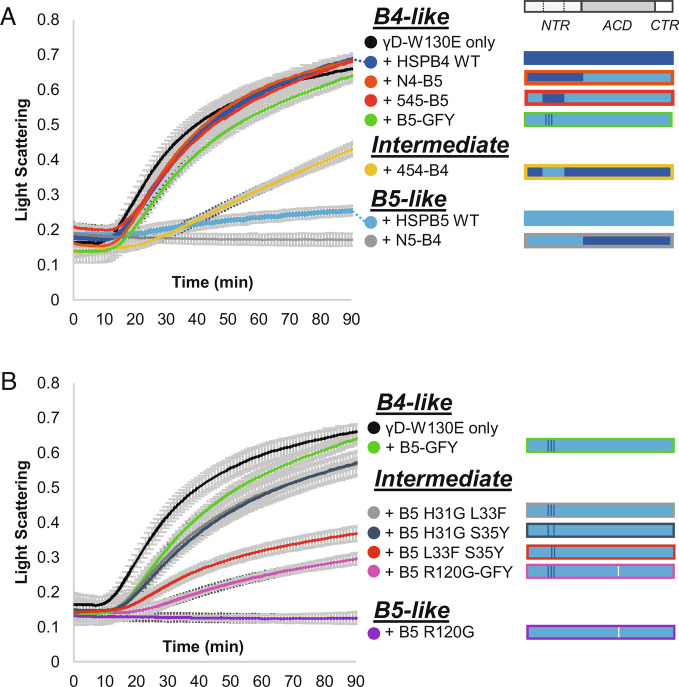Fig. 1.
The Middle NTR subregion has a dominant effect on chaperone activity. (A) Left: Aggregation of γD-W130E in the absence and presence of HSPB5 and HSPB4 WT (wild-type) and NTR swap chimeras. Time courses of aggregation are shown as the increase in light scattering (monitored as absorbance at 360 nm over time. Species are classified by activity level: high—“B5-like”, “Intermediate”, or low—“B4-like”. Right: key depicts the identities of the NTR subregions, ACD, and CTR for each sample, with light blue bars representing HSPB5 regions and dark blue bars representing HSPB4 regions. (B) Analogous assays to those described in A) showing the influence of Middle NTR mutations on HSPB5 chaperone activity. Right: A white line shows the approximate location of the R120G mutation in the ACD of B5 R120G and R120G-GFY. N = 3 for all samples, average light scattering value ±1 SD is shown.

